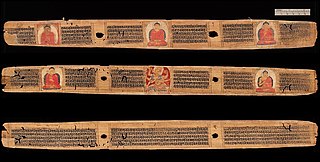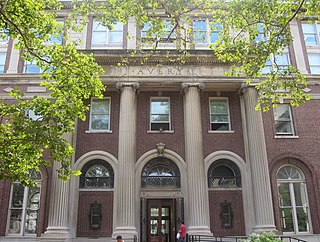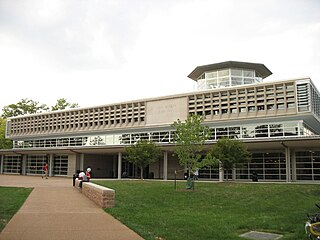
The Chinese Buddhist canon refers to the total body of Buddhist literature deemed canonical in Chinese, Japanese, Korean and Vietnamese Buddhism. The traditional term for the canon.

Woodblock printing or block printing is a technique for printing text, images or patterns used widely throughout East Asia and originating in China in antiquity as a method of printing on textiles and later paper. As a method of printing on cloth, the earliest surviving examples from China date to before 220 AD. Woodblock printing existed in Tang China by the 7th century AD and remained the most common East Asian method of printing books and other texts, as well as images, until the 19th century. Ukiyo-e is the best-known type of Japanese woodblock art print. Most European uses of the technique for printing images on paper are covered by the art term woodcut, except for the block-books produced mainly in the 15th century.

Dharanis, also known as a Parittas, are Buddhist chants, mnemonic codes, incantations, or recitations, usually the mantras consisting of Sanskrit or Pali phrases. Believed to be protective and with powers to generate merit for the Buddhist devotee, they constitute a major part of historic Buddhist literature. Many of these chants are in Sanskrit and Pali, written in scripts such as Siddham as well as transliterated into Chinese, Korean, Japanese, Sinhala, Thai and other regional scripts. They are similar to and reflect a continuity of the Vedic chants and mantras.

Traditional Chinese bookbinding, also called stitched binding, is the method of bookbinding that the Chinese, Koreans, Japanese, and Vietnamese used before adopting the modern codex form.

The University of California, Berkeley's 32 constituent and affiliated libraries together make it the fourth largest university library by number of volumes in the United States, surpassed only by the libraries of Harvard, Yale, and the University of Illinois at Urbana–Champaign. As of 2006, Berkeley's library system holds materials in more than 400 languages and contains over 13.5 million volumes and maintains over 70,000 serial titles. The libraries together cover over 12 acres (49,000 m2) of land and compose one of the largest library complexes in the world. In 2003, the Association of Research Libraries ranked it as the top public and third overall university library in North America based on various statistical measures of quality.

The Avery Architectural and Fine Arts Library is a library located in Avery Hall on the Morningside Heights campus of Columbia University in the New York City. It is the largest architecture library in the world. Serving Columbia's Graduate School of Architecture, Planning and Preservation and the Department of Art History and Archaeology, Avery Library collects books and periodicals in architecture, historic preservation, art history, painting, sculpting, graphic arts, decorative arts, city planning, real estate, and archaeology, as well as archival materials primarily documenting 19th- and 20th-century American architects and architecture. The architectural, fine arts, Ware, and archival collections are non-circulating. The Avery-LC Collection, primarily newer print books, does circulate.

Cornelius Vander Starr, sometimes known as Neil Starr, was an American businessman and founder of C.V. Starr & Co. in Shanghai, China, which became AIG.

Printing in East Asia originated from the Han dynasty in China, evolving from ink rubbings made on paper or cloth from texts on stone tables used during the Han. Printing is considered one of the Four Great Inventions of China that spread throughout the world. A specific type of printing called mechanical woodblock printing on paper started in China during the Tang dynasty before the 8th century CE. The use of woodblock printing spread throughout Asia, and the idea of printing perhaps spread to Europe, where German publisher and inventor Johannes Gutenberg improved on the design with the introduction of the mechanical press in the mid-15th century. As recorded in 1088 by Shen Kuo in his Dream Pool Essays, the Chinese artisan Bi Sheng invented an early form of movable type using clay and wood pieces arranged and organized for written Chinese characters. The use of metal movable type was known in Korea by the 13th century during the Goryeo period. In Korea the first movable types date from 1239/1240. A further discovery was made in 2009, and here the types were dated to the year 1377.
The University of British Columbia Library is the library system of the University of British Columbia (UBC). The library is one of the 124 members of the Association of Research Libraries (ARL). In 2017, UBC Library ranked 29th among members of the ARL for the number of volumes in library, making it the third largest Canadian academic library after the University of Toronto and the University of Alberta. However, UBC Library ranked 23rd for the titles held and second in Canada, and had a materials expenditures of $13.8 million, placing it 44th.

Washington University Libraries is the library system of Washington University in St. Louis. The system includes 12 libraries and over 5.5 million volumes. The John M. Olin Library is the central library.

The history of printing starts as early as 3500 BCE, when the proto-Elamite and Sumerian civilizations used cylinder seals to certify documents written in clay. Other early forms include block seals, hammered coinage, pottery imprints, and cloth printing. Initially a method of printing patterns on cloth such as silk, woodblock printing for texts on paper originated in China by the 7th century during the Tang dynasty, leading to the spread of book production and woodblock printing in other parts of Asia such as Korea and Japan. The Chinese Buddhist Diamond Sutra, printed by woodblock on 11 May 868, is the earliest known printed book with a precise publishing date. Movable type was invented by Chinese artisan Bi Sheng in the 11th century during the Song dynasty, but it received limited use compared to woodblock printing. Nevertheless, the technology spread outside China, as the oldest printed book using metal movable type was the Jikji, printed in Korea in 1377 during the Goryeo era.
The Hamilton Library at the University of Hawaiʻi at Mānoa is the largest research library in the state of Hawaii. The Library serves as a key resource for the flagship Manoa campus as well as the other University of Hawaii system campuses.

The Harvard–Yenching Library is the primary location for East Asia-related collections at Harvard Library. In addition to East Asian languages, it houses collections in European languages and Southeast Asian language (Vietnamese). Totaling more than 1.5 million volumes, the Harvard-Yenching Library has one of the largest collections in East Asian studies outside of Asia. The library has been located at 2 Divinity Avenue on the Cambridge campus of Harvard University since around 1957. The building was originally built in 1929 for Harvard's Institute of Geographical Exploration and currently houses part of the Harvard-Yenching Institute and the Department of East Asian Languages and Civilizations, in addition to the Harvard-Yenching Library.

The International Dunhuang Project (IDP) is an international collaborative effort to conserve, catalogue and digitise manuscripts, printed texts, paintings, textiles and artefacts from the Mogao caves at the Western Chinese city of Dunhuang and various other archaeological sites at the eastern end of the Silk Road. The project was established by the British Library in 1994, and now includes twenty-two institutions in twelve countries. As of 18 February 2021 the online IDP database comprised 143,290 catalogue entries and 538,821 images. Most of the manuscripts in the IDP database are texts written in Chinese, but more than fifteen different scripts and languages are represented, including Brahmi, Kharosthi, Khotanese, Sanskrit, Tangut, Tibetan, Tocharian and Old Uyghur.

Mongolian National Library located in Ulaanbaatar, is the largest and oldest surviving library in Mongolia. It houses over three million books and publications, one million of which are rare and valuable books, sutras and manuscripts, including the world's only surviving copies of many ancient Buddhist texts.

The Institute of Oriental Manuscripts (IOM) of the Russian Academy of Sciences, formerly the St. Petersburg Branch of the Institute of Oriental Studies of the Russian Academy of Sciences, is a research institute in Saint Petersburg, Russia that houses various collections of manuscripts and early printed material in Asian languages, including Arabic, Chinese, Mongolian, Tibetan, and Tangut.
The East Asian Library and the Gest Collection in the Princeton University Library is the university's principle collection of materials in Chinese, Japanese, and Korean languages, as well as works on Chinese, Japanese and Korean linguistics and literatures in Western languages.

The UCSF Library is the library of the University of California, San Francisco. It is one of the world's foremost libraries in the health sciences.

Richard C. Rudolph was an American professor of Chinese Literature and Archaeology at the University of California, Los Angeles.

The Cheng Yu Tung East Asian Library is a Canadian library and a part of the University of Toronto Libraries system. Located on the 8th floor of the Robarts Library at the University of Toronto's St. George campus, it is a major research collection on East Asian Studies in North America with over 660,000 volumes. The Library is open to the general public.


















